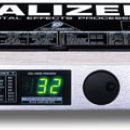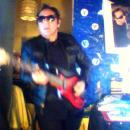¿has probado pulsas el boton HELP(abajo)?

Lo tengo en ingles.. =( Agradeceria que me dijeran ya que llevo batallando mucho con esto de las herramientas del cool he investigado por muchos medios y pues cuando aprendo algo carezco de otra cosa, espero por favor que me ayuden a cultivarme en esto del cool edit...
Pero muchas gracias radio 2

no dengo cool edit pero si pones la pagina de ayuda en ingles intentare traducirlo.

Bueno esque el cool edit ya no tiene pagina solo adobe audition ..
Muchas Gracias por tu ayuda y tu intencion de ayudarme...(si tienes un amigo que use el cool pidele el archivo de ayuda y me lo pasas bueno si quieres ...)
Si hay alguien que tenga el cool edit en español porfavor si me puede mandar el archivo de ayuda o contestarme la duda..
GRacias.

Hola. ¿es esto lo que necesitas?
Noise Reduction...
Cool Edit Pro’s Noise Reduction function can dramatically reduce background and general broadband noise with a minimal reduction in signal quality. It can also remove tape hiss, microphone background noise, 60 cycle hum, or any noise that is constant throughout the duration of your waveform.
Noise Reduction Dialog
The amount of reduction required depends upon the type of background noise, and the allowable loss in the quality of the signal that is to be kept. In general, you should be able to attain increases in Signal to Noise ratios of 5dB to 20dB. (Noise is reduced 21dB and signal 1dB for example).
Before you can perform noise reduction, you must load or get a noise profile first. This is done by pressing the Load Profile or Get Profile from Selection buttons.
If hiss is what you want to remove, try Cool Edit Pro’s Hiss Reduction effect instead.
View Left/Right
Noise Profile Plot
Load Profile
Save Profile
Get Profile from Selection
Snapshots in profile
Reduction Graph
Log Scale
Live Update
Noise Reducion Level
Noise Reduction Settings
Here’s the most common way to use Cool Edit Pro’s Noise Reduction function:
Record or a piece of music that has tape hiss or other background noise.
Select a short range (at least one half second) that contains only the noise that you'd like to reduce.
Choose the Effects > Noise Reduction > Noise Reduction option and click on Get Profile from Selection to sample the noise.
Click on Close.
Select the entire file (or the portion you want to noise-reduce).
Go to Effects > Noise Reduction >Noise Reduction again.
Click on OK to perform the noise reduction.
Preview
Press the Preview button to audition the current Noise Reduction setting before you apply it to the waveform. The selection is looped until you press the Stop button. Since Cool Edit Pro’s Previews are dynamic, this gives you the opportunity to make and hear processing adjustments as the selection is continuously played.
You can reduce the noise incurred by the sound board's circuitry during recording--just record a second of silence before whatever you want to record and tell the noise reducer to remove the sound of that silence in order to further reduce the noise level by up to 10dB.
Noise reduction works best on 16-bit and 32-bit samples. Although it will work with 8-bit audio, it’s impossible to get the noise level to less than about -45dB – if even that. Noise at -45dB is very audible, as owners of 8-bit sound cards can attest. You can get much better results by converting to 16 bits first, reducing the noise, and downsampling back to 8 bits, than by reducing noise in 8-bit samples directly.
You’ll get better results with Noise Reduction if the original signal is centered. To center a signal, highlight it and choose the “Center Wave” preset from the Effects > Amplitude > Amplify function. Centering the wave adjusts the DC offset to zero. If the wave isn’t centered, you may hear audible clicking in quiet parts after processing. Because centering takes out all frequencies below about 16Hz, it’s completely safe to do without any ill side effects.
You can generate interesting effects by choosing valid “foreground” audio as your profile “footprint” rather than background noise or hiss. For example, within a vocal line, you can select the vowel “O” to be used as the profile. Processing this vocal file (remember, it’s best to process a copy of the original file) will then reduce or eliminate the “O” sounds, thereby creating a rather wild effect.
Great effects can be generated by setting the noise level to some valid signal component in the waveform, and not the background noise. Whatever frequencies are present in the highlighted selection when Set Noise Level is chosen will be removed when the reduction level is set to 100.
Edit View: Effects > Noise Reduction > Noise Reduction...
* This function supports Preview.
--------------------------------------------------------------------------------
See Also...
Some notes on Noise Reduction
Using Noise Reduction

Bueno eso yo tambien lo tengo en mi cool edit.. lo que ocupo es el archivo de ayuda en español que vienen en archivos de programa..ya que los traductores revuelven todo .. Gracias , espero que no cierran este tema por concluido ya que yo sigo en las mismas.. Tan solo un manual del noise reduction o el archivo que pido .. Gracias..

HOla !! yo no tengo el cool edit y mi ingles tecnico cada dia es peor, pero bueno vamos a ver...
FFT es Fast Fourier Transformate , Transformada rapida de fourier.
en ella tienes los puntos q significara la cantidad de muestras q quieras tomar de un señal, cuantas mas muestras tome mas preciso y mas informacion tendra, lo k tambien siginifca mas tiempo de proceso y consumo de disco duro.
tambien tienes las opciones de remover el ruido (remove noise) o dejar solo el ruido(keep only noise)
creo q antes de decirle uno de estos dos y aplicarlo (darle a ok o a preview) tendras q especificarle cual es el ruido , para ello tienes el noise profile ese (creo no estoy seguro ,pero por lo k veo tiene q ser eso... o.. vas ser q no!!!, jaja) en profiles tienes load (donde podras cargar muestras de ruido q vengan en el progrma o los q tu salves y almacenes ) `para salvar primero tendras q seleccionar el ruido , toma una muestra de la señal en la q solo haya ruido, creo q con el get profile from selection.el snapshot ese no se exactamente q es .
luego tienes "reduce by" .. esa es la cantidad de decibelios q kieres atenuar el ruido q hayas selecionado como tal , "precision factor" no hara falta ni traducirlo no?, "smoothing amount" tendre q mirar la traduccion ahora mismo no me acuerdo. "width transition" no se si era anchura de transicion en dB sera para algo asi como disimular el cambio de una parte reducida o atenuada por llevar sonido con otra parte de la señal q no lo lleva.
por otra parte tienes "log scale" q significa escala logaritmica, pipenso q ya vendra por defecto un logaritmo para aplicarlo a cualkier señal , ese sera fijo porque luego tienes "live update" q la ocion libre para tomar los puntos de reduccion segun el tipo de señal , aunk puede q una vez tomados los puntos de reduccion tu puedas variarlos pulsando sobre ellos y moviendolos, para darle mas o menos atenuacion , al lado tienes la opcion flat q es para dejar todos esos puntos al nivel cero o intermedio entre more y less , mas y menos, de las dos `pantallas q tienes la de arriba sera la del spectro de la señal o los niveles de ruido y en la de abajo tienes una linea enla q supongo apareceran los puntos de reduccion para darle mas o menos reduccion.
te keda el noise redution level q sera para no hacerlo a mano y poder hacer la reduccion al todo el conjunto de puntos.
bueno ahora queda q lo pruebes orientandote en lo q te he dicho y q te fijes en los cambios
ya nos lo cuentas a ver si he acertado en algo de lo k he dicho.
salu2

ey men muchas gracias por hacerme este favor si les dire como me fue.. Gracias..

bueno creo q no he puesto q antes de darle a noise reduction creo q tienes q selecionar el ruido desde la muestra . le das a get profile from selection la guardasle das a close
ahora seleccionas toda la muestra vuelves a noise reduction le das a load profile recuperas la muestra de ruido guardada antes y empiezas a trastear los factores y a darle al preview a ver q tal , creo q se hace asi . bueno pues eso ya nos cuentas.
vale?.
venga

hola amigo te diré lo que yo hago:
selecciono toda la onda o lo que hayas grabado,y sigo la siguiente secuencia:
EFFECT/NOISE REDUCCION/NOISE REDUCTION/GET PROFILE SELECTION/luego hay una cosa que dice noise reduction level ésta debe estar en LOW luego pincho Ok.
y eso es todo ya que lo que hace esta funcion es elimanarte todos los ruidos de tu onda eso es lo que yo hago espero que esto te sirva. yo no soy un experto en cool edit, pero poco a poco he hido aprendiendo y si hay alguien que sepa algo que sea mejor que haga su aporte para que todos aprendamos.
saludos
patricio

otra cosa que hago es que en la onda que estoy trabajando busco los espacio que estan vacio o en silencio es decir espacios en los que no se graba esos espacios los selecciono y le colocoEFFECT/SILENCEesto lo hago despues de aplicar el noise reduction es para eliminar mas ruidos que pudieran haber quedado en esos espacios vacios.
bueno espero que esto sirva.
mucghos saludos
chau








